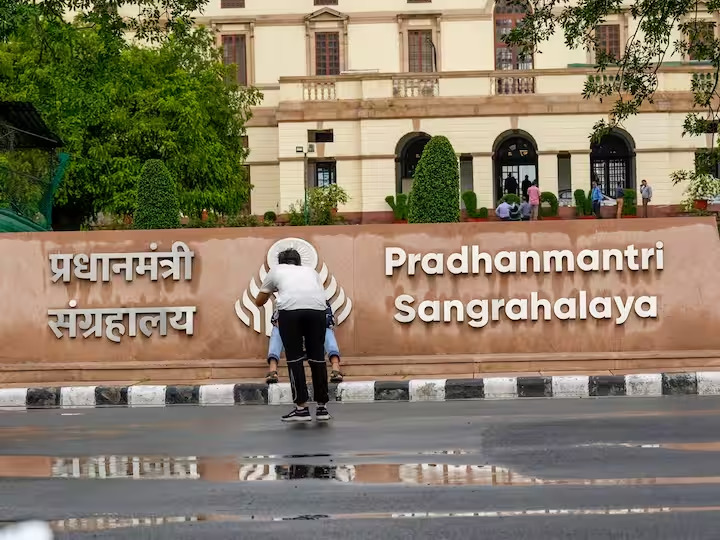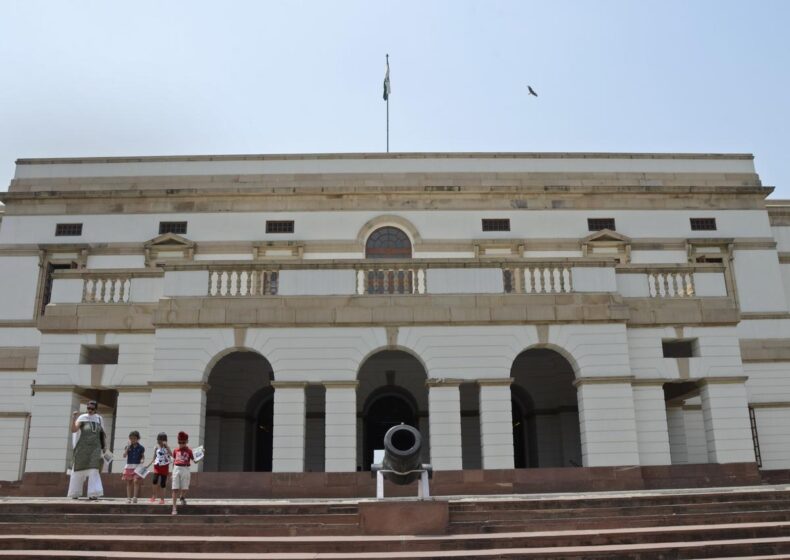The name of Nehru was removed, and the Nehru Memorial Museum and Library (NMML) was renamed the Prime Ministers’ Museum. Additionally, the NMML has further renamed the Prime Ministers’ Museum and Library Society.
Nehru’s name has been removed, and the Nehru Museum Memorial and Library has been renamed as the Prime Minister’s Museum and Library Society. Teen Murti Bhavan, which was the official residence of India’s first Prime Minister Jawaharlal Nehru, now houses the Prime Minister’s Museum.
The decision to rename the institution was made by the Nehru Memorial Museum and Library (NMML) Society during a special meeting chaired by Defense Minister Rajnath Singh.
The name change was deemed necessary to reflect the institution’s current activities, which include a museum showcasing the democratic journey of independent India and the contributions of each Prime Minister to nation-building.
Prime Minister’s Proposal
Prime Minister Narendra Modi proposed the idea for a museum dedicated to all Prime Ministers in 2016. The NMML Executive Council approved the construction of the Museum of All Prime Ministers in the Teen Murti Estate during its 162nd meeting in November 2016.
On April 21, 2022, the construction of the project was finished, and the Prime Minister’s Museum was made accessible to the public.

During the Society meeting, Nripendra Misra, Chairman of the NMML Executive Council, emphasised the need for the name change, stating that the Prime Ministers’ Museum symbolizes the nation’s commitment to democracy.
Defense Minister Rajnath Singh supported the proposal, highlighting that the institution now represents the contributions of all Prime Ministers, from Jawaharlal Nehru to Narendra Modi, and their responses to various challenges.
Singh compared the journey of the Prime Ministers to the colours of a rainbow, emphasizing the importance of representing all colours proportionately to create beauty. The name change resolution aims to honour all previous Prime Ministers, embrace democratic values, and reflect the institution’s new form.
The Teen Murti House, constructed between 1929 and 1930 as a component of Edwin Lutyens’ imperial capital, initially functioned as the official residence of the Commander-in-Chief in India. However, in August 1948, it was designated as the official residence for Jawaharlal Nehru, India’s first Prime Minister, who resided there until his passing in May 1964.
Inaugural on 75th Birth Anniversary
On the occasion of Nehru’s 75th birth anniversary, the Teen Murti House was dedicated to the nation, and the Nehru Memorial Museum was inaugurated. Subsequently, the NMML Society was established two years later to oversee the management of the institution.
Since April 2022, the Teen Murti campus has been home to the Prime Minister’s Museum, housed in a new building. The museum tells the story of how Prime Ministers guided the nation through various challenges and fostered overall progress.
By acknowledging and honouring the achievements of every Prime Minister, promotes inclusivity and ensures equal representation of their contributions, thereby making the institutional memory more democratic.
The renaming of the Nehru Museum Memorial and Library to the Prime Minister’s Museum and Library Society reflects the evolving nature of the institution and its expanded focus on showcasing the collective journey of democracy in independent India. The decision to rename the institution was made to honour the contributions of all Prime Ministers and to emphasize the institution’s commitment to democratic values.
The Teen Murti Bhavan, which once served as the official residence of Jawaharlal Nehru, now houses the Prime Minister’s Museum, which tells the story of how Prime Ministers have steered the nation through various challenges. By recognizing and democratizing the institutional memory of all Prime Ministers, the newly renamed institution aims to foster a deeper understanding of India’s democratic legacy and the crucial role played by its leaders in nation-building.













